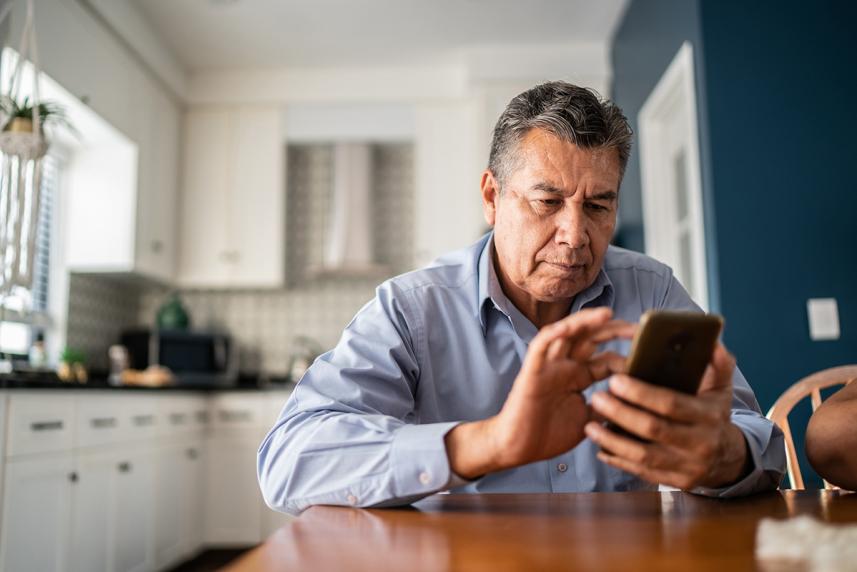
Could you be one of them?
Try these simple tips to help fix common connectivity issues with your phone.

Bluetooth is a wireless technology that allows devices to connect with one another. Most hearing aids these days have Bluetooth capability.1
That means you can connect your hearing aids with another Bluetooth device such as a smartphone. You can also connect to a tablet or TV if they're Bluetooth enabled. Then you can stream phone calls, podcasts or TV shows into your hearing aids — as if they were headphones.2
You can also raise the audio volume or adjust background noise via an app on your phone or tablet.3
But every so often you may run into connectivity glitches, says Lisa D. Bont, Au.D. She’s an audiologist and the owner of Advanced Audiology Services in Marysville, Michigan. Follow these tips to help troubleshoot Bluetooth issues.

Could you be one of them?
Check your phone and your hearing aids:
The next thing to check is whether your hearing aids are paired (connected) to your phone. Your hearing care professional may have done this for you when you got your hearing aids. But sometimes you need to pair up your devices again.
If you have an iPhone: Go to “Settings,” then tap “Accessibility,” then “Hearing Devices.” You should see your hearing aids listed there.
If you have an Android: The app for your specific hearing aid may walk you through the pairing process. Or you can go to “Settings” on your phone, then tap “Connected Devices,” then “Pair New Device.” You should see your hearing aids listed there.
Still having trouble? Call the hearing aid manufacturer’s tech support team, Bont advises. There are different forms of Bluetooth, and not all are compatible with every Android phone or very old iPhones, she says.
You can also search online to find pairing directions for your brand of hearing aids.
If the batteries in your hearing aids aren’t powered up, this may affect how reliable your Bluetooth connection is, Bont notes.
To fix the issue, check the batteries. Rechargeable batteries tend to last 15 to 30 hours. But streaming can drain batteries so they lose power sooner.4 Disposable batteries last about 3 to 7 days, though some larger ones may last as long as 10 days.5
Through EPIC Hearing Healthcare, you get up to 3 follow-up visits at no extra cost — and a trial period to try out your new prescription hearing aids. Learn more.
Automatic updates to your phone may cause some issues, says Bont. The phone manufacturers don’t always notify hearing aid companies when they’ve updated. “So we are sometimes caught off guard by the Bluetooth issues that start suddenly,” she says.
If this happens, try the following:
Hearing aid apps are sometimes updated too. Some of these manufacturer’s apps will notify you when this happens. If so, update it right away, says Bont.
Let’s say you just brought your devices to your hearing care professional to be repaired or cleaned. Sometimes that may also disrupt the Bluetooth connection.
If that’s the issue, take them back to your hearing care professional, suggests Bont. They might have to:
Then you can start streaming again — and get back to your favorite music and shows.
Sources
Information is for educational purposes only and is not a substitute for the advice of a licensed medical provider. Consult your provider prior to making changes to your lifestyle or health care routine.
Hearing aids purchased in the Silver technology level will receive 1 follow-up visit.